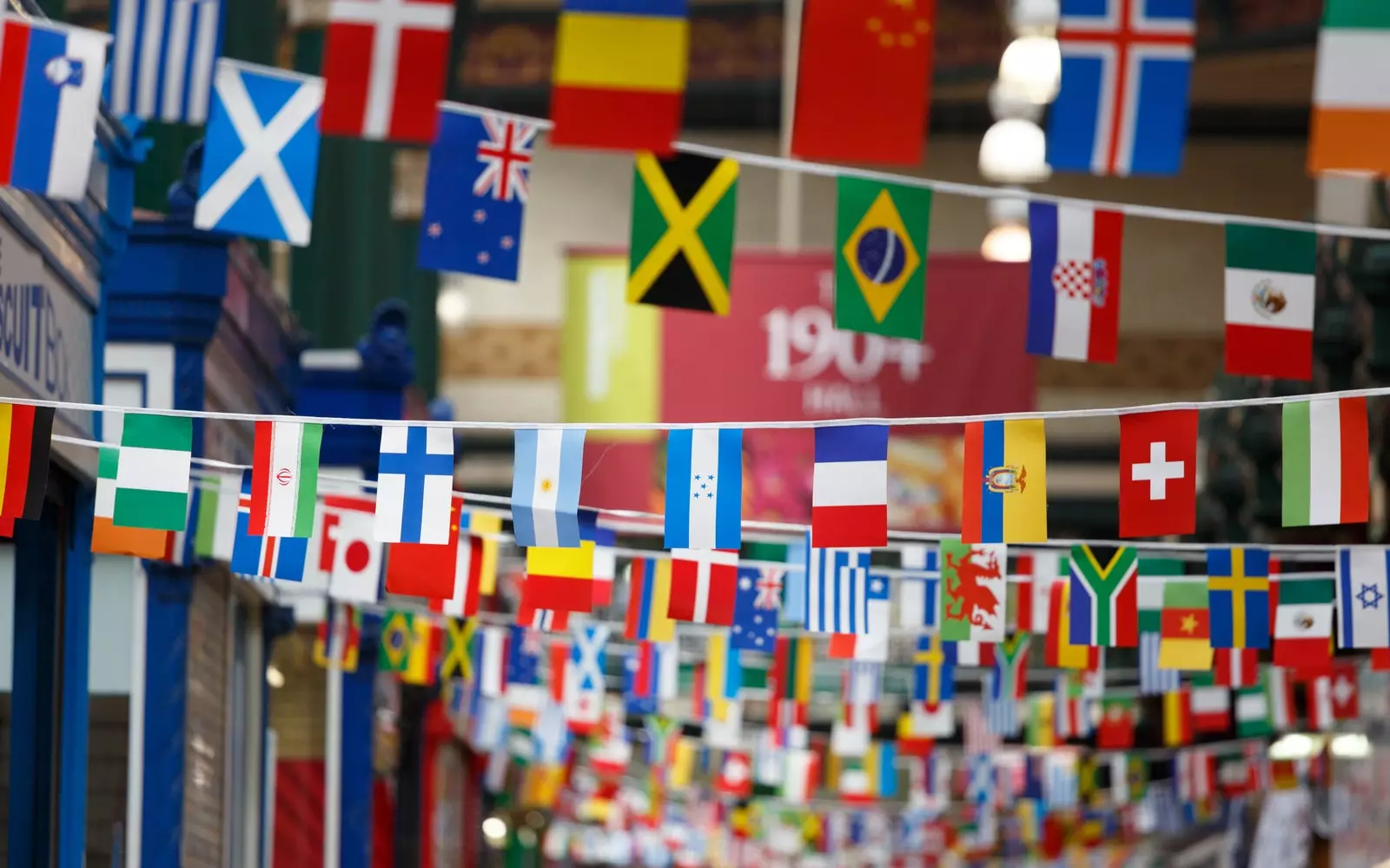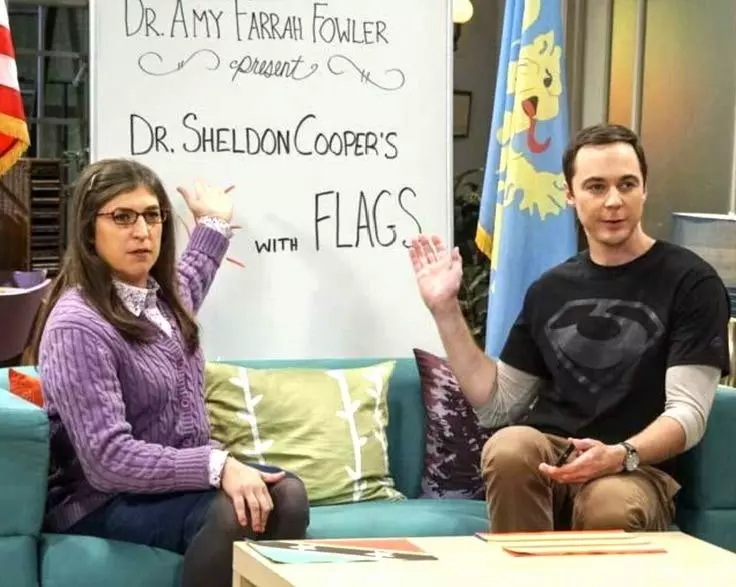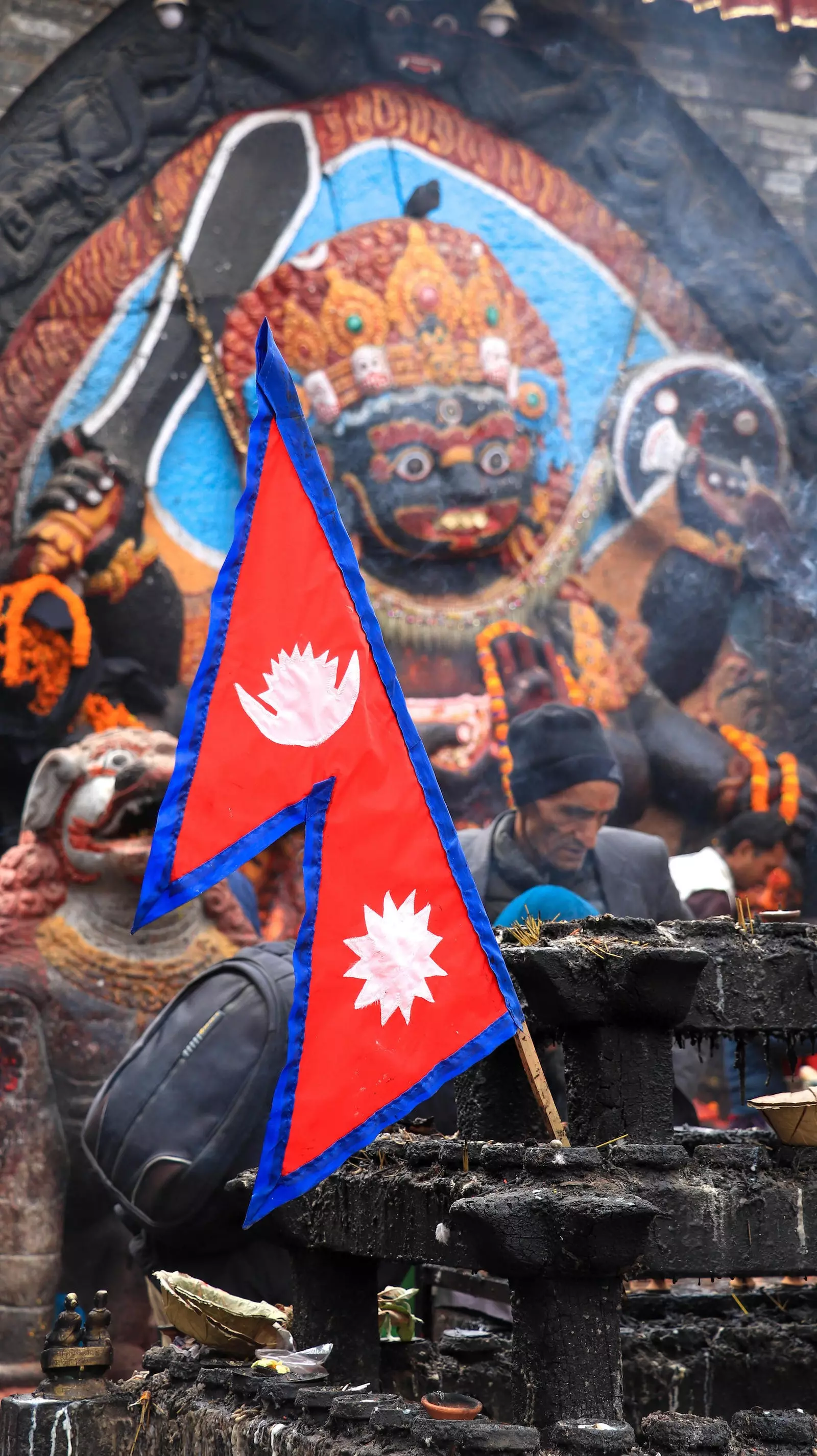
Vexillology is the discipline that is responsible for studying the flags.
It's very probable that the vast majority of mortals have never heard of vexillology and that a high number of those who have done so are staunch followers of the Big Bang Theory series and therefore of the show within the show Sheldon Cooper presents Fun with Flags in which **Dr. Cooper analyzes, in as much detail as his character demands it, the exciting and curious world of flags. **
One of the first questions thrown into the air by this theoretical physicist's program is what is the only non-rectangular flag. Although anticipating the answer, there is a preliminary question: Why are the vast majority of flags rectangular or square? The easiest answer would be because of its ability to wave, but it would be incomplete.

Sheldon Cooper presents Fun with Flags.
“The triangular ones, like the nautical club pendants, last longer and have less whiplash effect but have less capacity to carry emblems, the rectangle gives you more possibility of content and design”, explains José Carlos Alegría, president of the Spanish Society of Vexillology. "Of course, there are many proportions," he points out. The most used are 2:3 (that is, if the width is two units, the length is three) and 1:2, but there are many more, such as the 13:15 ratio of Belgium, the 7:10 ratio of Brazil or the 28:37 ratio of the Danish flag, considered the oldest in the world.
However, once the issue of the form is resolved, what is that exception? If we focus on the national banners, that peculiarity in the format is put by Nepal. The Guardian of Everest has a flag formed by two triangles that represent the Himalayas and the two majority religions of the country, Hinduism and Buddhism. And the colors? Crimson red embodies the color of rhododendron, the national flower, and is a sign of victory and bravery while the blue border signifies peace and harmony.

Nepal, an unconventional flag
FLAGS WITH RIFLES OR WITH TRADITIONAL CARPET DESIGNS
Because colors matter, and a lot, when it comes to flags. For example, There is no national flag that carries violet as the main color –those of Dominica and Nicaragua contain it in very small details–, not even that of South Africa which is, with that of South Sudan, one of those with the most main colors, specifically six: red, yellow, white, green, blue and black. So what black is not very common when it comes to national ensigns... although the appearance of an AK-47 rifle is even less so –they say that as a way of showing the determination of the people to protect their freedom–, as is the case of the one in Mozambique, or the detailed design of five rugs –representing the five main tribes of the country – in that of Turkmenistan.
What is usual is that the flag is made up of three horizontal bands, which is by overwhelming majority the most used design, followed by the three stripes but this time vertical.
In the case of the Scandinavian it is recurrent to use the Scandinavian cross or cross of San Olaf and if we travel to Oceania we will find an interesting combination of ensigns in which the British Union Jack is not usually missing, although some countries, such as New Zealand, tried unsuccessfully to modernize their flag with their national symbols to get rid of colonial echoes.
The design of the Spanish flag, for example, is curiously unusual. “One of the successes of the Spanish is that the central stripe was chosen to be double that of the ends, although sometimes it is drawn poorly. That makes it quite distinctive”, argues Alegría.
ONLY EIGHT NATIONAL FLAGS DO NOT HAVE RED OR BLUE
Going back to the colors, too It is highly frequent that the flag shows the range of red. This was determined by Ferdio, an agency specialized in infographics that, after a study of the national flags of the world, concluded that reds are the most used followed by white and blues.
Red is most used in Asia, Europe, and South America, blue in Oceania and North America, and green in Africa. The truth is that the list of flags that do not contain the ranges of red and blue is limited to eight countries: **Cyprus, Niger, Nigeria, Saudi Arabia, Pakistan, Jamaica, Ireland and Ivory Coast. **
Seeing those two flags, that of Ireland and the Ivory Coast, could easily be confused as they have the same design of three vertical stripes with the same colors just in reverse order. Ireland's is green, white and orange while Côte d'Ivoire's is orange, white and green. Something similar happens with Indonesia (two horizontal stripes, red above and white below) and Poland (same two stripes but with white above and red below) or that of Costa Rica and Thailand with the colors changed in order.
ARE THERE EQUAL FLAGS?
Although there are even more striking cases in which the flags are as equal as those of Indonesia and Monaco, where the discrepancy is only in the size of the cloth or those of Colombia and Ecuador, to which the only difference is that the latter includes the shield.
A similar case – in which you have to sharpen your eyes to distinguish the color range well – is that of Italy and Mexico. And in those of Romania and Chad, the point is in slightly darker tones. Yes, the colors of the Jordanian and Palestinian flags are the same, exactly the same except that the first one has a small white star. And it is that, At the moment, there is no regulation that prevents two countries from having the same flag.
